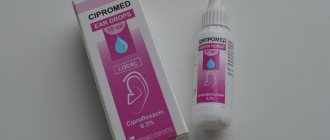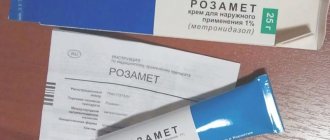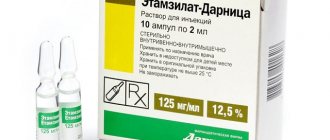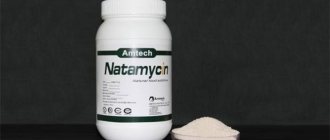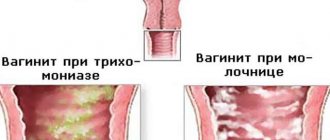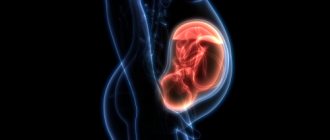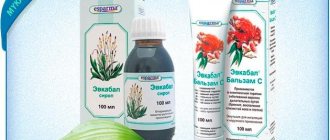Benzathine benzylpenicillin ~ Antibiotic, penicillin
The product is not available in the presented pharmacies*
A natural antibiotic obtained from the mold Penicillium chysogenum. It has a bactericidal effect on microbial cells. Characterized by long-lasting action. Suppresses the synthesis of the cell wall of microorganisms. Active against gram-positive pathogens: Staphylococcus spp. (penicillinase-non-forming), Streptococcus spp., incl. Streptococcus pneumoniae, Corynebacterium diphtheriae, anaerobic spore-forming bacilli, Bacillus anthracis, Clostridium spp., Actinomyces israelii; gram-negative microorganisms: Neisseria gonorrhoeae, Neisseria meningitidis, as well as Treponema spp. Staphylococcus spp. strains that produce penicillinase, which destroys benzylpenicillin, are resistant to the drug. Due to its long-lasting effect, the drug is used in the treatment of infections caused by Streptococcus spp. and Treponema pallidum. More about the drug »
ATTENTION! ALWAYS check with your doctor or pharmacist to see if the found analogue can serve as a full replacement for the drug prescribed to you or the drug you are looking for. This is due to the need to use the dosage forms and doses prescribed specifically for you, which may differ even among analogues (more about analogues of drugs).
Release form and composition
The drug is produced in the form of a lyophilized powder for the preparation of an injection solution: cream to white [600 thousand or 1.2 million International Units (IU) in a 5 ml glass bottle, or 2.4 million IU in a 15 ml bottle; 50 bottles in a cardboard box].
Composition of the drug contained in 1 bottle:
- active substance: benzathine benzylpenicillin – 600 thousand, 1.2 or 2.4 million IU (equivalent to 459 mg, 918 mg and 1836 mg, respectively);
- additional components: sodium citrate, sodium carboxymethylcellulose, povidone.
Analogs
Amosin
Sintez OJSC (Russia) Average price – 51 rubles
Description: the main active ingredient is amoxicillin, the release form is a yellowish powder, white gelatin capsules, light-colored tablets, a solution for injections, a yellowish suspension with a specific odor.
Pros:
- Low price
- It has a wide spectrum of action (can be used for various infections of the respiratory tract, soft tissues, gastrointestinal tract, skin, genitourinary system).
Minuses:
- Contraindicated in diabetes mellitus and lactation
- It has more side effects than extensillin (including respiratory distress, insomnia, joint pain and agranzocytosis).
Ampicillin
Sanavita Gesundheitsmittel (Germany), Sintez OJSC (Russia), Kraspharma (Russia), Dalkhimfarm (Russia) Average price - 100 rubles
Description: the active ingredient is ampicillin, available in the form of light tablets, gelatin capsules, bitter powder for injection and white granules with a fruity odor for suspension.
Pros:
- The course of treatment is only a week
- Side effects occur less frequently than with Extencillin.
Minuses:
- The powder has a bitter taste
- Prohibited under 18 years of age.
Pharmacological properties
Pharmacodynamics
Benzathine benzylpenicillin is a beta-lactam antibiotic belonging to the group of long-acting penicillins type G. The substance exhibits a bactericidal effect against sensitive microorganisms due to inhibition of the synthesis of structural components (mucopeptides) of the bacterial cell wall. Extensillin has an effect on Treponema pallidum and Streptococcus pyogenes, which cause yaws and syphilis.
Pharmacokinetics
After intramuscular (IM) administration, the active substance is very slowly hydrolyzed, leading to the release of benzylpenicillin. The maximum concentration (Cmax) of the drug is observed 12–24 hours after injection. Due to the long half-life of the substance, a stable level of its content in the blood is achieved for a long time. On the 14th day after intramuscular administration at a dose of 2.4 million IU, the serum concentration of benzathine benzylpenicillin is 0.12 μg/ml. On the 21st day after injection at a dose of 1.2 million IU, the concentration of the active substance in 89–97.4% of patients is 0.06 μg/ml (1 IU = 0.6 μg).
Extensillin is characterized by complete penetration into liquids, very weak penetration into tissues. Binds to plasma proteins by 40–60%. The drug undergoes minor biotransformation, is excreted mainly by the kidneys, passes through the placental barrier and is excreted in breast milk.
Extensillin
Active substance:
Benzathine benzylpenicillin*
Pharmgroup:
Penicillins
Analogs for the active substance:Benzathine benzylpenicillin sterile Benzathinebenzylpenicillin sterile Benzicillin-1 Bicillin-1 | Application area:Degenerative rheumatic disease Degenerative and rheumatic tendon diseases Degenerative rheumatic diseases Localized forms of soft tissue rheumatism Rheumatism Rheumatism with a pronounced allergic component Rheumatism articular and extra-articular Rheumatic attack Rheumatic complaints Rheumatic diseases Rheumatic diseases of the intervertebral disc Rheumatic disease Rheumatic spine disease Rheumatoid diseases Relapses of rheumatism Syphilis Articular and extra-articular rheumatism Articular and muscular rheumatism Articular rheumatism Articular syndrome in rheumatism Chronic rheumatic pain Chronic articular rheumatism |
Instructions for use of Extensillin: method and dosage
Extensillin is injected deep intramuscularly.
Recommended dosage regimen:
- relapses of articular rheumatism (for prevention purposes): every 15 days for adults, 1 injection at a dose of 2.4 million IU, for children (taking into account age) - from 600 thousand to 1.2 million IU;
- yaws and pinta – endemic treponematoses (therapy): once for adults in a dose of 1.2–2.4 million IU, for children (with body weight less than 45 kg) – from 600 thousand to 1.2 million IU;
- syphilis (therapy): adults every 8 days, 1 injection at a dose of 2.4 million IU.
Before the procedure, the lyophilized powder contained in a bottle should be diluted with water for injection at the rate of 2 ml of solvent per 600 thousand IU of the drug. Before administration, the solution must be mixed thoroughly, rolling the bottle with the drug between the palms of your hands, while avoiding excessive foam formation.
It is unacceptable to administer Extencillin intravenously!
Indications for use
The drug is prescribed to combat diseases caused by bacteria sensitive to extencillin.
Used for:
- Syphilis
- Scarlet fever
- Tonsillitis
- Erysipelas
- Rheumatism
- Purulent complications after surgery.
The medicine and its dosage are prescribed by the doctor after examining the patient and establishing a diagnosis. Instructions for use must be strictly followed to avoid dangerous side effects.
Side effects
- digestive system: candidiasis, nausea, diarrhea, vomiting; in some cases - pseudomembranous colitis;
- allergic reactions: fever, urticaria, difficulty breathing, eosinophilia, exfoliative dermatitis, erythema multiforme, Quincke's edema; in isolated cases - anaphylactic shock.
Other symptoms of immunoallergic origin rarely observed during therapy include: temporary moderate increase in serum transaminases, acute interstitial nephritis, reversible thrombocytopenia, leukopenia, anemia.
The use of beta-lactam antibiotics in high doses, especially in patients with renal failure, can lead to the development of encephalopathy (motor disturbances, convulsions, impaired consciousness).
Children may experience local effects from Extencillin injections.
Penidure (complete analogue of Retarpen and Extensillin) 1.2 million IU No. 5 (5 pcs/pack)
Dosage form
Powder for preparation. solution for intramuscular injection prolong. actions, 1 bottle per package.
Compound
Active ingredient: benzathine benzylpenicillin;
1 bottle contains benzathine benzylpenicillin 2,400,000 IU.
Excipients: simethicone, mannitol (E 421), povidone, sodium.
Pharmacological group
Beta-lactam antibiotics, penicillins.
Pharmacological properties
Pharmacodynamics
Benzathine benzylpenicillin is a long-acting beta-lactam antibiotic from the group of penicillins type G. It exhibits a bactericidal effect against sensitive microorganisms by suppressing the synthesis of cell wall mucopeptides.
Active against gram-positive pathogens: Staphylococcus spp. (Penicillin-insoluble), Streptococcus spp., including Streptococcus pneumoniae, Corynebacterium diphtheriae, anaerobic spore-forming bacilli, Bacillus anthracis, Clostridium spp., Actinomyces israelii; gram-negative microorganisms: Neisseria gonorrhoeae, Neisseria meningitidis, as well as Treponema spp. Strains of Staphylococcus spp., which produce penicillinase, which destroys benzylpenicillin, are resistant to the drug. Due to its long-lasting effect, the drug is intended for the treatment of infections caused by Streptococcus spp. and Treponema pallidum.
Pharmacokinetics.
When administered, benzathine benzylpenicillin is very slowly absorbed from the injection site, providing a prolonged effect.
Maximum serum concentrations are achieved 12-24 hours after injection. The long half-life ensures a stable and prolonged concentration of the drug in the blood: on the 14th day after administration of 2,400,000 IU, the concentration in the blood serum is 0.12 mcg/ml. The degree of binding to plasma proteins is approximately 55%.
Benzathine benzylpenicillin penetrates the placental barrier in small quantities, as well as into breast milk. The metabolism of the drug is insignificant. It is excreted primarily by the kidneys unchanged; within 8 days, up to 33% of the administered dose is eliminated.
Indications for use
Treatment of infections caused by microorganisms sensitive to the drug:
- acute tonsillitis;
- scarlet fever;
- erysipelas (chronic), erysipeloid;
- infected wounds and bite wounds;
- syphilis and other diseases caused by treponemes (yaws, endemic syphilis, pinta).
Prevention:
– rheumatic diseases (chorea, rheumatic carditis)
— poststreptococcal glomerulonephritis;
— scarlet fever (after contact with a sick person)
- faces;
- syphilis (after contact with a sick person).
Directions for use and doses
To prepare the suspension, add 5 ml of water for injection to the vial. Use only freshly prepared suspension, shake vigorously for 20 seconds and inject immediately using a needle of at least 0.9 mm thickness. Retarpen is injected into the upper quadrant of the gluteal muscle. To administer the drug, it is necessary to insert the needle perpendicular to the surface of the skin with a sharp movement, while avoiding the proximity of large vessels. If blood aspiration or pain occurs during administration of the drug, the injection should be stopped. Inject the drug as slowly as possible only under low pressure. Do not rub the injection site after administration. If repeated injections are necessary, the injection site should be changed. It is necessary to suction immediately before administering the drug to avoid the needle getting into the blood vessels. No more than 5 ml of suspension should be injected into one place at a time.
Treatment of syphilis.
Primary syphilis. A single dose of 2,400,000 MO of Retarpen, distributed over 2 injection sites.
Secondary syphilis. 2,400,000 IU of Retarpen at 2 injection sites.
If clinical manifestations recur or laboratory test results remain positive, treatment should be repeated.
Late syphilis (latent seropositive syphilis). 2,400,000-4,800,000 IU weekly for 3-5 weeks.
Treatment of yaws.
1,200,000 – 2,400,000 IU once. Persons who have had contact with sick people or patients with a latent form of infection should be given half the dose.
Pint treatment.
2,400,000 MO Retarpen at a time.
Treatment of other infections caused by microorganisms sensitive to the drug (acute tonsillitis, scarlet fever, erysipelas, erysipeloid, infected wounds and bite wounds).
2,400,000 MO Retarpena weekly.
Prevention of rheumatism and rheumatic endocarditis, chorea, post-streptococcal glomerulonephritis and erysipelas.
1,200,000 – 2,400,000 MO Retarpen once every 4 weeks.
The duration of prophylaxis is determined by the doctor individually.
Prevention of scarlet fever in persons who have had contact with patients.
2,400,000 MO Retarpen at a time.
For streptococcal diseases, the course of treatment should be at least 10 days to prevent complications. As a rule, one injection of Retarpen 2,400,000 IU is sufficient.
Special categories of patients.
Patients with impaired renal function.
| Dosage of Retarpen depending on creatinine clearance | |||
| Creatinine clearance, ml/min | 100–60 | 50–10 | < 10 |
| Blood serum creatinine in mg% | 0,8–1,5 | 1,5–8,0 | 15 |
| Part of the usual daily dose | 100 % | 75 % | 20-50% (max. 1,000,000–3,000,000 MO/day) |
| Administration interval | 1. Introduction | 1. Introduction | Divide into 2-3 injections |
Patients on hemodialysis.
Benzathine benzylpenicillin can be removed by hemodialysis. There is insufficient data regarding the effect of dialysis on plasma levels of benzathine benzylpenicillin.
Patients with impaired liver function.
In case of serious impairment of liver and kidney function, there may be a delay in the degradation and excretion of penicillin.
Children
The drug should not be used in children.
Overdose
The use of high doses of beta-lactam antibiotics, especially in liver failure, can cause the development of encephalopathy (confusion, impaired movement). Penicillins in large doses can cause neuromuscular irritability or epileptic-like seizures. Potentially, overdose may cause gastrointestinal symptoms and electrolyte imbalance.
Treatment: symptomatic and supportive therapy, hemodialysis. A specific antidote is unknown.
Adverse reactions
Infections and infestations:
common – resistant bacterial and fungal infections (including candidiasis).
From the blood and lymphatic system:
very rarely common - hemolytic anemia, leukopenia, thrombocytopenia, agranulocytosis, eosinophilia.
From the immune system:
rarely common - hypersensitivity reactions, including rashes; urticaria, Quincke's edema, erythema multiforme, exfoliative and contact dermatitis, fever, joint pain, laryngospasm, bronchospasm, anaphylactic shock sometimes with collapse and death, anaphylactoid reactions (asthma, thrombocytopenic purpura).
Symptoms from the digestive tract:
frequency unknown - serum sickness; during the treatment of syphilis, due to the release of endotoxins, the Jarisch-Herxheimer reaction may develop, which is characterized by the following symptoms: fever, chills, myalgia, headache, exacerbation of skin symptoms, tachycardia, vasodilation with changes in blood pressure (the reaction can be dangerous in cardiac -vascular syphilis or conditions in which there is a serious risk of increased local damage, such as optic atrophy). Patients with dermatomycosis may develop paraallergic reactions as a result of possible joint antigenicity between penicillins and dermatophyte metabolites. Steven-Johnson syndrome, toxic epidermal necrolysis (Lyell's syndrome).
From the nervous system:
rarely common – neuropathy.
From the digestive tract:
common – diarrhea, nausea; rarely common – stomatitis, glossitis, vomiting; frequency unknown - pseudomembranous colitis, black coloration of the tongue.
From the hepatobiliary system:
frequency unknown - hepatitis, cholestasis.
From the skin:
frequency unknown - pemphigoid.
From the urinary system:
rarely common - nephropathy, interstitial nephritis.
General violations:
frequency unknown - pain, infiltration at the injection site, Uagne's syndrome, Hoigne's and Nicolau's syndrome.
Laboratory research:
common - positive Coombs test, false-positive test result for the presence of protein in the urine during the precipitation reaction (Folina-Ciocalteu-Louri method, biuret method), false positive test result for the detection of amino acids in the urine (ninhydrin method), simulation of pseudobisalbuminemia when using electrophoresis for the determination of albumin, a false-positive result for the determination of glucose and urobilinogen by a non-enzymatic method, an increased level when determining 17-ketosteroids in urine (using the Zimmerman reaction).
The drug contains povidone, so very rarely the latter can accumulate in the reticuloendothelial system or local depots, which can lead to the development of granuloma.
Best before date
4 years.
Storage conditions
Store at a temperature not exceeding 30 °C in the original packaging to protect from light.
Keep out of the reach of children.
The powder should be diluted in water for injection.
Vacation category
On prescription.
special instructions
If any allergic reaction occurs, immediately stop administering the drug and begin appropriate treatment.
During therapy with Extensillin, there is a risk of developing very severe allergic reactions (including anaphylactic shock), which can be fatal. As a result, when collecting anamnesis, it is necessary to pay special attention to the tolerability of previous treatment with drugs from the penicillin group. If there is a history of an allergy to the latter, the use of benzathine benzylpenicillin is strictly contraindicated.
The risk of cross-allergy with cephalosporins should also be taken into account; therefore, if there is a history of allergic reactions to cephalosporins, the use of penicillins is contraindicated.
Patients on a low-salt diet must remember that a dose of 600 thousand IU of the drug contains sodium in the amount of 5.5 mg or 0.24 mmol.
Similar drugs:
- Furacilin Solution for topical use
- Lactobacterin siccum dry (Lactobacterin siccum) Lyophilisate for the preparation of solution for oral administration
- Palin Capsule
- Bactrim Oral suspension
- Nitroxoline Oral tablets
- Pancef Oral tablets
- Nifuroxazide (Nifuroxazide) Oral tablets
- Ercefuryl Oral suspension
- Sextaphag Oral solution
- Pancef Granules for the preparation of suspension for oral administration
** The Drug Directory is intended for informational purposes only. For more complete information, please refer to the manufacturer's instructions. Do not self-medicate; Before starting to use Extensillin, you should consult a doctor. EUROLAB is not responsible for the consequences caused by the use of information posted on the portal. Any information on the site does not replace medical advice and cannot serve as a guarantee of the positive effect of the drug.
Are you interested in the drug Extensillin? Do you want to know more detailed information or do you need a doctor's examination? Or do you need an inspection? You can make an appointment with a doctor - the Euro lab is always at your service! The best doctors will examine you, advise you, provide the necessary assistance and make a diagnosis. You can also call a doctor at home . Euro lab clinic is open for you around the clock.
** Attention! The information presented in this medication guide is intended for medical professionals and should not be used as a basis for self-medication. The description of the drug Extencillin is provided for informational purposes only and is not intended for prescribing treatment without the participation of a doctor. Patients need to consult a specialist!
If you are interested in any other drugs and medications, their descriptions and instructions for use, information about the composition and form of release, indications for use and side effects, methods of use, prices and reviews of drugs, or you have any other questions and suggestions - write to us, we will definitely try to help you.
